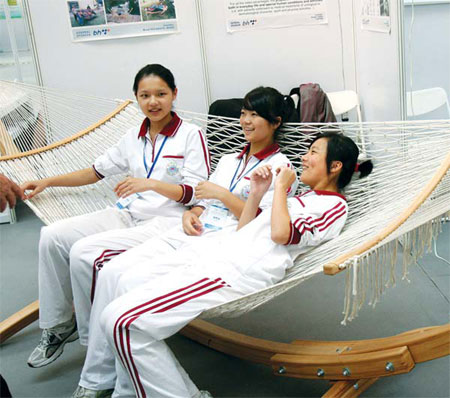|

Grassroots inventions are not always high-tech, but meet the needs of daily life and market demands, said an association executive. Qi Zhenlin / for China Daily
|
Inventions, education in the spotlight in Jiangsu
More than 3,000 inventions and displays from 40 countries and regions across the world are expected to be displayed at two simultaneous exhibitions opening on Nov 9 in Kunshan, Jiangsu province.
The 2012 International Exhibition of Inventions and the International Exhibition of New Education Equipment will have four pavilions covering nearly 50,000 square meters of combined floor space.
The two events are the largest invention patent and teaching equipment exhibition and trading fairs held in the past several years, said organizers at a press conference on Sept 26 in Beijing.
As part of a series of events for China Patent Week, the four-day exhibitions will provide opportunities for the transfer of technology and proprietary innovation, said organizers. They are expected to attract more than 400 buyers from overseas.
The twin fairs, which include forums and trade negotiations, also aim to encourage invention, promote the awareness of intellectual property rights and improve government services for inventors, said organizers.
"The international situation has changed rapidly in recent years, and the shift in global trade and industries has had a great influence on China," said Lu Dahan, secretary-general of China Association of Inventions, an organizer of the International Exhibition of Inventions.
"If the country wants to transform from a world manufacturer to a major innovator, Chinese companies must improve their capacity to become the key force of technological innovation," he said.
"China is currently catching up with the world trend, but two or three decades in the future it will lead," Lu added.
The International Exhibition of Inventions started in 1988, and is held every four years.
Grassroots inventors
Lu suggested that the government make efforts to encourage inventions by individual grassroots inventors, as they possess "great wisdom and potential for innovation, although they are less reported in the media than scholars and professionals".
He said that there is "some atmosphere of impatience and impetuousness" today in the nation's scientific and technological circles as many scientists care more about fame and funding than invention itself.
"But grassroots inventors, on the contrary, choose their subjects based on personal interests, things actually needed in daily life that meet market demands," Lu said. "Many of their inventions have great originality."
Citing karaoke, instant noodles and zippers, he noted that many renowned inventions across the world were not made by professional teams, but individual amateurs in their spare time.
Commercialization
A specialized area at the fair will display some 20 selected inventions that have been commercialized, covering a number of cutting-edge sectors such as environmental protection, emission reduction and desert resource exploration.
The China Association of Inventions has paid close attention to commercialization of inventions, said Lu, and "has made some achievements" in the field.
The association assesses inventions in annual national exhibitions, then provides 5 million yuan ($795,500) in prizes every two years to winning projects.
It now has a partnership with a leading Chinese venture capital company to offer 100 million to 1 billion yuan a year to help commercialize 100 inventions, and another 1 to 10 billion yuan to fund ongoing projects.
zhangzhao@chinadaily.com.cn
(China Daily 10/10/2012 page18)

